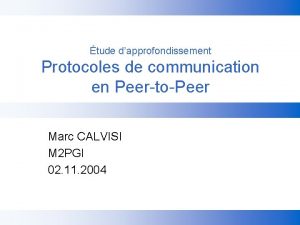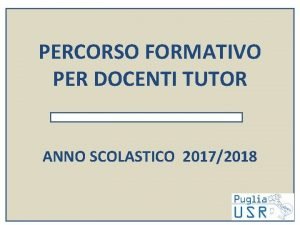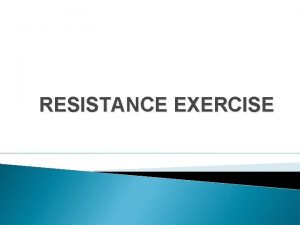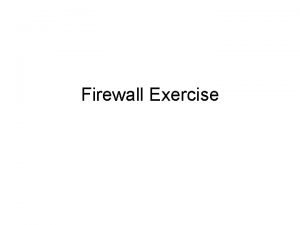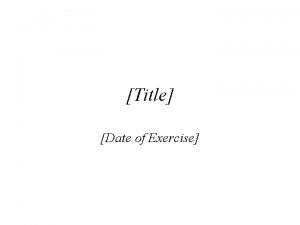A Peer Introduction Exercise 1 Choose a peer












- Slides: 12

A: Peer Introduction Exercise 1. Choose a peer you would like to practice your oral presentation with 1. Exchange resumes & cover letters 2. Read peer’s cover letter 3. Read peer’s resume 2. Introduce peer to people at your table/class

First Read Peer’s Cover Letter 1. Make notes of relevant points for introduction to people at table 2. Make notes/suggestions on letter to improve it based on Aamodt & Raynes p. 287 -290

Writing Cover Letters • Salutation – direct to a particular person – avoid Sir or Madam • Paragraphs – – for what job am I applying why am I qualified why your organization how to reach me • Signature

After reading cover letter, read peer’s resume 1. If resume describes relevant features not described in cover letter, add to your notes for introducing peer – Suggest to peer to add these features into cover letter 2. Make notes/suggestions on resume to improve it based on Aamodt & Raynes p. 283 -287

Is the Peer Resume of Relevant Type? • Chronological • Functional • Psychological

Rules for Writing Resumes • Resumes must be physically appealing • The resume cannot contain typing, spelling, or grammatical errors • Resumes should make the applicant look as good as possible - without lying

Criteria to evaluate Psychological Resume • Does Summary Section take advantage of – Priming? – Primacy? – Short Term Memory Limits? • Does 2 nd section of resume include info that is – Relevant? – Unusual? – Positive? • Of positive, does it list only a few GREAT things? (Anderson, 65)

A: Peer Introduction Exercise 1. Choose a peer you would like to practice your oral presentation with 2. Exchange resumes & cover letters 3. Read peer’s cover letter 4. Read peer’s resume 5. Introduce peer to people at your table

When introducing peer. . I • Have a key point which will be reinforced in the body of your introduction – Priming • Cite their best feature first – Primacy • Limit the pieces of information – Short Term Memory Limits

When introducing peer…II • Cite only relevant features that will reinforce the key point – Relevant • Mention anything unusual that makes them unique but still adds to their ‘key’ feature – Unusual • Only mention a few positive things – Positive

B: Working with peer • Read the oral presentation material assigned to you • Identify to peer what you think you should focus on for your oral presentation slides – Use criteria of ‘difficult to understand’ • Identify the type of explanation you should use for the material you will present

Read assigned material Focus on one aspect Classify the aspect Is it a concept? Examples, counter examples etc. Is it a idea that is hard to believe? Identify invalid assumptions of implicit theory etc. Is it a process? Model to explain processes or parts
 Annotazioni sulla verifica effettuata peer to peer
Annotazioni sulla verifica effettuata peer to peer Peer-to-peer
Peer-to-peer Tim beamer
Tim beamer Peer to peer transactional replication
Peer to peer transactional replication Konsep dasar jaringan komputer
Konsep dasar jaringan komputer Esempio registro peer to peer compilato
Esempio registro peer to peer compilato Scheda osservazione tutor compilata
Scheda osservazione tutor compilata Relazione finale docente tutor compilata
Relazione finale docente tutor compilata Peer to peer l
Peer to peer l Peer to peer merupakan jenis jaringan… *
Peer to peer merupakan jenis jaringan… * Bitcoin: a peer-to-peer electronic cash system
Bitcoin: a peer-to-peer electronic cash system Features of peer to peer network and client server network
Features of peer to peer network and client server network Programmazione e sviluppo condiviso compilato
Programmazione e sviluppo condiviso compilato

